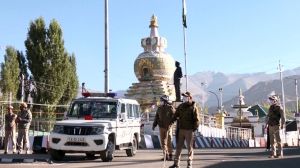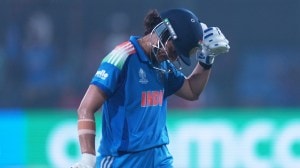Nepal’s Hrithikmania
The hysterical fan following for the Kaho na pyar hai heart-throb has turned into a fierce frenzy, and that too in the otherwise serene Hi...

The hysterical fan following for the Kaho na pyar hai heart-throb has turned into a fierce frenzy, and that too in the otherwise serene Himalayan kingdom of Nepal. Four lives have been lost, and over a hundred injured in police firings during widespread protests over a disparaging remark allegedly made by Bollywood’s numero uno star. Although the newly-wed Hrithik has denied making any remark of this kind — and there is no evidence to prove him wrong — unfortunately no one is listening. Notwithstanding the violence and the unfortunate loss of lives, the entire episode could have been dismissed as much ado about nothing except that the anti-Hrithik ire whipped up by vested interests indicates a far deeper malaise. The loony student lumpenism on the streets of Nepal, inspired by an outdated Maoism, is directed more against the venality of the Nepali establishment and against what is wrongly perceived as India’s "big brotherly attitude".
Sandwiched between India and China, this little Himalayan kingdom suffers from a strange paranoia. The inter-party conflict between the Nepali Congress and the Nepali Communists invariably manifests itself as hatred for the country’s two large neighbours, India and China. While the Maoists consider the notoriously corrupt Nepali Congress as a "stooge" of New Delhi, the Congress-led establishment in Kathmandu views the left-wing insurrectionary guerrillas as “terrorists” inspired by China. In addition, there is an economic logic to it as well. The anti-India sentiments are fanned by the dominance of the Indian entrepreneurial community in the economy of the kingdom and the overwhelming presence of a large contingent of Indian labour in Nepal, especially in the southern reaches of the terai. Endemic poverty, large scale unemployment, the disproportionate presence of poor Nepali women in the flesh trade, make matters worse. These are legacies from a feudal past. Unfortunately democracy in Nepal has not beenable to break the stranglehold of the old power elite. This results in a large scale alienation amongst the youth. Moreover, lingering memories of the six month long economic blockade that snapped all trade ties between India and Nepal some years ago and the more recent Kandahar hijacking, have only added to the simmering tensions.
Hrithik Roshan, with his enormous fan following, is caught by default in the crossfire. Other Bollywood icons — Dharmendra, Madhuri Dixit — had been similarly targetted in the past. But the latest Hrithik frenzy is unprecedented, both in terms of scale and emotion. Perhaps the madness is in proportion to the enormous popularity enjoyed by Bollywood’s latest sensation. The fact that Hrithik is also the superhero of the new nationalist genre film, Mission Kashmir, makes him an obvious scapegoat. It is simply not a coincidence that this latest film has been the target of all the ire on the streets and the Nepal government has finally had to withdraw it from all the theatres in the country. As politics gets more prone to violent conflict and real life politicians more corrupt and unaccountable, popular heroes from reel life may turn out to be symbols, both of adulation and ire.





- 01
- 02
- 03
- 04
- 05


























